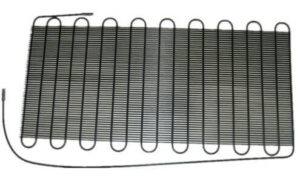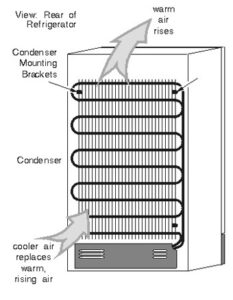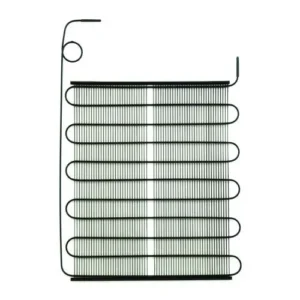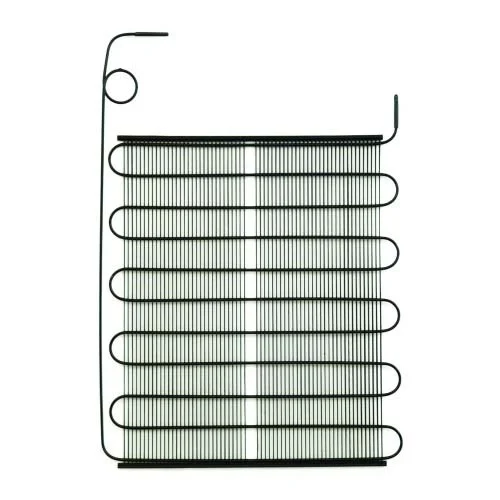Refrigeration Condenser

The refrigeration condenser is a crucial component in a refrigeration system, and its primary function is to release heat absorbed by the refrigerant during the cooling cycle. In this explanation, we will explore the role of the condenser, its types, and its importance in the refrigeration process.
Role of the Refrigeration Condenser:
In a refrigeration system, the refrigeration condenser comes after the evaporator in the cooling cycle. Its primary role is to dissipate the heat that the refrigerant has absorbed from the interior of the refrigerator or the space being cooled. The refrigerant, which is in a gaseous state after passing through the evaporator, enters the condenser where it undergoes a phase change, turning from a gas into a high-pressure, high-temperature liquid.
Types of Refrigeration Condensers:
There are several types of refrigeration condensers used in refrigeration systems, each with its own advantages and applications:
- Air-Cooled Condenser: This type of condenser uses air as the cooling medium. It consists of a network of tubes or coils with fins that facilitate heat exchange. A fan or fans blow air across these coils to remove heat and cool the refrigerant. Air-cooled condensers are commonly found in household refrigerators and some commercial refrigeration units.
- Water-Cooled Condenser: Water-cooled condensers use water as the cooling medium. They are often more efficient than air-cooled condensers but require a water supply. They are commonly used in large commercial and industrial refrigeration systems.
- Evaporative Condenser: Evaporative condensers combine the principles of air and water cooling. They use a combination of air and water to cool the refrigerant. These are common in industrial and large-scale refrigeration applications where both efficiency and water conservation are essential.
- Shell and Tube Condenser: Shell and tube condensers consist of a cylindrical shell containing a bundle of tubes. Refrigerant flows through the tubes, and cooling water surrounds the tubes. They are commonly used in industrial and large HVAC systems.
- Coil-in-Coil Condenser: This design features two coils, with one nested inside the other. Refrigerant flows through the inner coil, and cooling medium (air or water) surrounds the outer coil. They are compact and used in smaller commercial refrigeration units.
Importance of the Refrigeration Condenser:
The refrigeration condenser is a critical component of the refrigeration system for several reasons:
- Heat Removal: It plays a central role in removing the heat absorbed by the refrigerant during the evaporator’s cooling cycle. Without effective heat removal, the refrigeration system cannot maintain the desired low temperature inside the refrigerated space.
- Pressure Increase: The condenser raises the pressure of the refrigerant, causing it to change from a gas to a high-pressure liquid. This pressurization is crucial for the refrigerant to flow through the system and ensure that it can absorb heat efficiently during the evaporator cycle.
- Phase Change: The phase change from gas to liquid is a critical step in the refrigeration cycle. It releases a significant amount of heat, making it essential for heat removal.
- Efficiency: The efficiency of the condenser is vital for the overall performance of the refrigeration system. A well-designed and properly functioning condenser ensures that the system operates efficiently, consuming less energy while providing effective cooling.
Refrigeration Condenser in AC
In an air conditioning (AC) system, the condenser is a critical component responsible for releasing heat and cooling the high-pressure, high-temperature refrigerant gas. The condenser plays a crucial role in the refrigeration cycle of an AC system, allowing the heat absorbed from inside the conditioned space to be dissipated outdoors. Here’s a more detailed explanation of the condenser in an AC system.
The condenser is the outdoor unit of an AC system and follows the evaporator in the refrigeration cycle. Its primary function is to reject heat from the refrigerant, causing it to change from a high-pressure, high-temperature gas into a high-pressure liquid. This phase change is essential for the AC system to maintain the desired cooling effect inside the building.
How the refrigeration Condenser Works:
The process in the refrigeration condenser involves several steps:
- Refrigerant Arrival: The high-pressure, high-temperature refrigerant gas, which has absorbed heat from the indoor air, arrives at the condenser via the refrigerant lines.
- Heat Rejection: The condenser coil or coils inside the outdoor unit facilitate the release of heat from the refrigerant. Typically, the outdoor unit contains a fan or multiple fans that blow air over the coils. As the air passes over the coils, it carries away the heat from the refrigerant, causing it to lose thermal energy.
- Phase Change: As the refrigerant releases heat in the condenser, it undergoes a phase change from a gas to a high-pressure, high-temperature liquid. This phase change is critical in preparing the refrigerant for the next stage of the cycle, which is expansion through the expansion valve.
- High-Pressure Liquid: The refrigerant leaves the condenser as a high-pressure liquid. It then flows through the refrigerant lines back into the building’s indoor unit, ready to start the cooling cycle once again.

